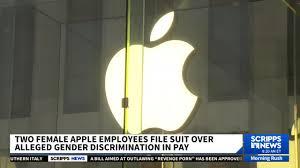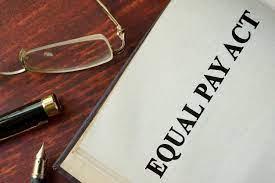Apple is confronting a class-action lawsuit over alleged gender pay discrimination. The suit was filed in San Francisco state court on behalf of two female employees. It claims Apple systematically underpaid women through manipulative hiring and evaluation practices.
The lawsuit seeks to represent over 12,000 current and former Apple employees. This case highlights ongoing issues of gender pay disparity in the tech industry.
Plaintiffs Allege Systemic Wage Gap

Justina Jong and Amina Salgado are the named plaintiffs in the lawsuit. They assert that Apple created a wage gap between male and female employees.
The plaintiffs claim this disparity stems from hiring practices and performance evaluations. Apple allegedly used salary history to set starting pay, perpetuating existing inequalities. This practice has been illegal in California since 2017.
Hiring Practices Under Scrutiny

The lawsuit alleges Apple’s hiring managers asked about previous salaries. This information was then used to determine starting pay for new employees. After California outlawed this practice, Apple reportedly shifted to asking about salary expectations.
Both methods allegedly led to women consistently earning less than men in similar positions. Such practices can reinforce historical pay disparities.
Performance Metrics Favor Men

According to the plaintiffs, Apple’s performance evaluation system disproportionately rewarded male employees. Metrics like teamwork and leadership allegedly favored men.
This bias reportedly resulted in more promotions and bonuses for male employees. Such practices can create a cycle of inequality in the workplace. Performance evaluation systems have long been scrutinized for potential biases.
Accidental Discovery Reveals Disparity

Jong claims she discovered the pay gap accidentally. She found a male coworker’s W-2 form showing he earned $10,000 more. This discovery was for substantially similar work.
Such incidents highlight the lack of pay transparency in many workplaces. Pay secrecy can mask systemic inequalities and hinder efforts to achieve pay equity.
Third-Party Investigation Confirms Gap

Salgado reportedly complained to Apple about pay disparities. The company allegedly didn’t address the issue until a third-party investigation confirmed the gap. This suggests potential resistance to internal complaints about pay equity.
Third-party audits can be crucial in verifying and addressing pay disparities. Many companies now conduct regular pay equity analyses to proactively address such issues.
Compensation and Backpay Sought

The plaintiffs are seeking compensation for unpaid wages. This includes backpay that Salgado claims she hasn’t received. Such lawsuits often aim to recover lost wages and address systemic issues.
Backpay awards can be substantial in large-scale discrimination cases. The outcome of this case could have significant financial implications for Apple.
Apple’s Market Position Highlighted

Apple is currently the world’s most valuable company. Its market capitalization stands at $3.285 trillion. This immense wealth contrasts sharply with the alleged pay disparities.
Large tech companies often face scrutiny over their employment practices. The case underscores the ongoing debate about wealth distribution in the tech industry.
California Law Prohibits Practice

In 2017, California banned employers from asking about salary history. This law aimed to break the cycle of pay discrimination. Apple allegedly adapted its practices to skirt this law.
State-level legislation has been a key tool in addressing pay equity. other states have since passed similar laws to combat pay discrimination.
Legal Representation Speaks Out

Attorney Joe Sellers is representing Jong and Salgado. He states that Apple’s practices have a disparate impact on women. Sellers argues that the pay disparity is unjustified under law.
Legal experts often play crucial roles in highlighting discriminatory practices. Such cases can set important precedents for workplace equality.

